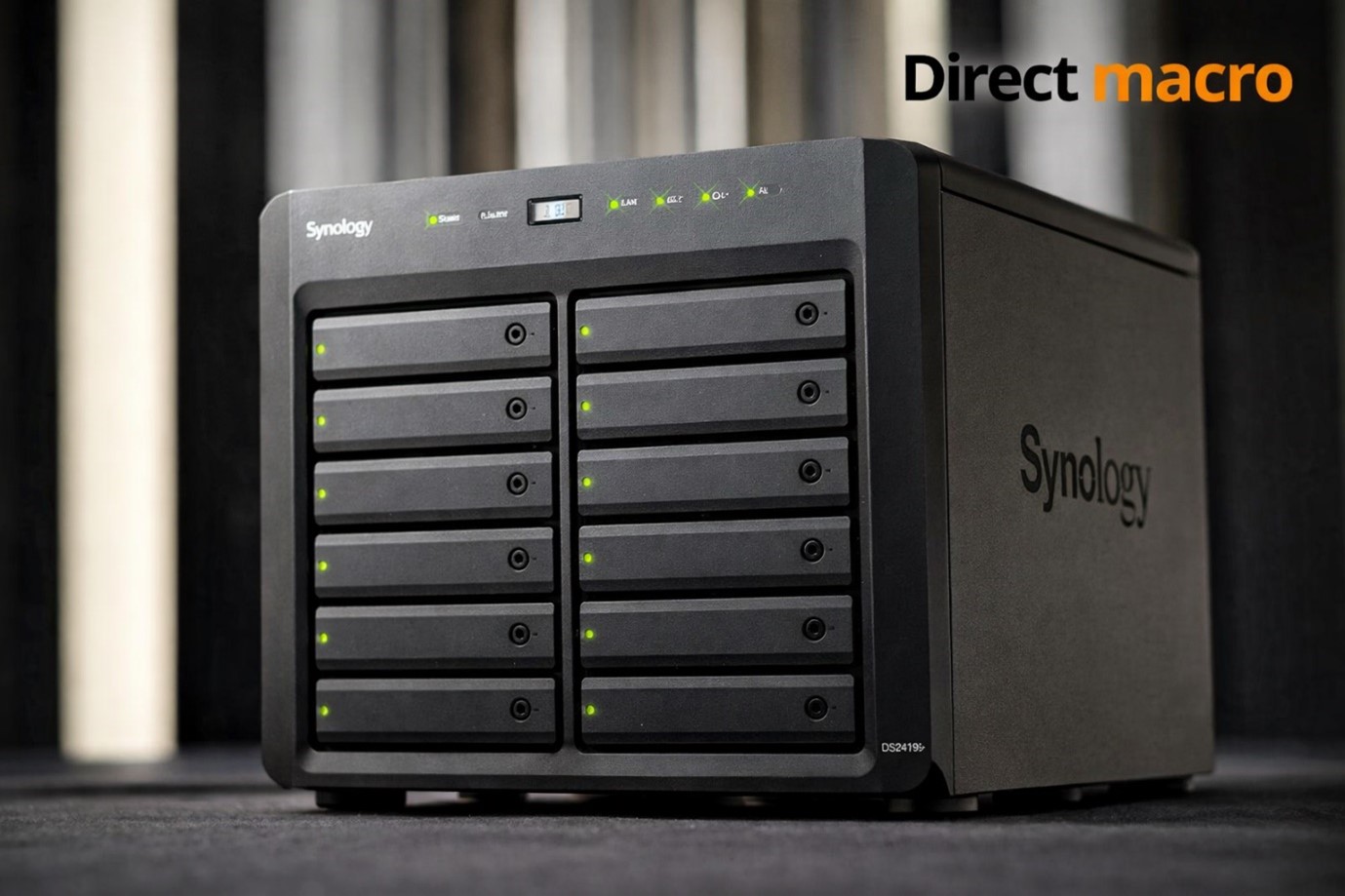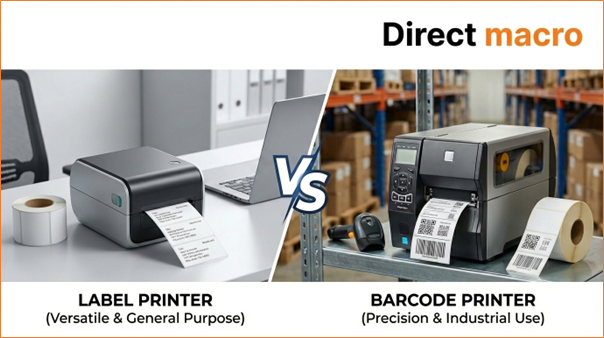Understanding Computer Memory: What Types of Memory Are Available?
Have you ever wondered how your computer stores and accesses the data you need? This complex process is made possible by computer memory. But what exactly is computer memory, and how does it work? In this blog, we’ll explore its different types, their functions, and how they affect your computer’s performance. We’ll also discuss how to clean its, so keep reading till the end.
What Does a Computer Memory Do
Computer memory is an essential component of any computer system that temporarily or permanently stores data. It allows the computer to process and access information quickly and efficiently. There are two main types of computers memory: primary memory and secondary memory.
Types of Computer Memory
Computer memory is the beating heart of any computer system, a vital element that can make or break your experience. Whether you’re Building a Gaming PC or upgrading an existing one, understanding the different types of computer memory can help you make the right choice. Let’s explore the different types of computers memory available:
Primary Memory
Primary memory, often referred to as main memory or internal memory, is a vital component of any computer system. It directly communicates with the Central Processing Unit (CPU) and provides the CPU with the data it needs for processing. There are two types of primary memory:
Random Access Memory (RAM)
Random Access Memory, or RAM, is a volatile type of memory, which means it only stores data when the computer is powered on. Once the computer is turned off, all data stored in RAM is lost. RAM is responsible for temporarily holding the data that your computer’s CPU requires for executing tasks and running applications. The data stored in RAM can be accessed and modified quickly, allowing for efficient multitasking and overall system performance.
Read Only Memory (ROM)
Read Only Memory, or ROM, is a non-volatile type of memory that retains its contents even when the computer is powered off. Unlike RAM, ROM stores data permanently, ensuring that critical system data is always available when needed. ROM contains essential information, such as the computer’s BIOS (Basic Input/Output System) or firmware, which is necessary for booting up the computer and initializing hardware components. Since the data stored in ROM is generally unmodifiable or only modifiable under specific conditions, it provides a secure and stable environment for essential system information.
Secondary Memory
Secondary memory is a non-volatile type of memory used for long-term data storage. It’s also known as external or auxiliary memory. Some common types of secondary memory include:
Hard Disk Drives (HDD)
The Hard Disk Drives utilize magnetic storage technology to store and retrieve digital information. The data is stored on spinning platters coated with a magnetic material, with read/write heads hovering just above the surface. HDDs are known for their large storage capacities and relatively low cost per gigabyte, making them an ideal solution for long-term storage or when handling large files.
Solid State Drives (SSD)
The Solid State Drives use NAND-based flash memory for data storage, which provides faster read and write speeds and greater durability than traditional HDDs. This is because SSDs have no moving parts, reducing the risk of mechanical failure and wear. Additionally, SSDs consume less power and generate less heat, resulting in increased energy efficiency and longer battery life for portable devices. However, SSDs typically come with a higher price tag and have a lower storage capacity compared to HDDs.
Optical Drives
Optical drives are devices that use laser technology to read and write data on optical discs, such as CDs, DVDs, and Blu-ray discs. These drives work by emitting a laser beam that interacts with the disc’s surface, which is covered with microscopic bumps and flat areas representing binary data. While optical drives have become less popular in recent years due to the prevalence of digital downloads and cloud storage.
RAM and Its Types
Random Access Memory serves as the computer’s temporary storage for data that is actively being used or processed. There are two primary types of RAM: Dynamic RAM (DRAM) and Static RAM (SRAM).
Dynamic RAM (DRAM)
Dynamic RAM, or DRAM, stores data in memory cells consisting of a capacitor and transistor, which can represent a binary value of either 0 or 1. DRAM requires constant refreshing to maintain its contents, as the capacitors lose their charge over time. This refreshing process results in higher power consumption and slower access times compared to SRAM.
Static RAM (SRAM)
Static RAM, or SRAM, is a faster and more expensive type of RAM compared to DRAM. It uses flip-flops to store data, which eliminates the need for constant refreshing. This leads to lower power consumption and faster access times. SRAM is often used for high-performance applications, such as CPU caches, where speed is crucial. However, due to its higher cost and larger size, SRAM is less commonly used as a primary memory solution.
ROM and Its Types
Read Only Memory (ROM) comes in various forms, each with its unique characteristics and capabilities. The three main types of ROM are Programmable ROM (PROM), Erasable and Programmable ROM (EPROM), and Electrically Erasable and Programmable ROM (EEPROM). Let’s delve into the specifics of each type to better understand their applications and features.
Programmable ROM (PROM)
PROM, is a type of ROM that can be programmed only once by the user. Once the data is written to the PROM chip, it becomes permanent and cannot be modified. PROM is often used for storing firmware, critical system data, and other information that does not require frequent updates. While PROM offers a stable and secure storage solution, its inflexibility and inability to accommodate data changes can be limiting for certain applications.
Erasable and Programmable ROM (EPROM)
Erasable and Programmable ROM, is a type of ROM that can be erased and reprogrammed multiple times. Unlike PROM, EPROM allows for updates and changes to the stored data. However, the erasure process requires exposure to ultraviolet (UV) light for an extended period, making it time-consuming and necessitating specialized equipment. The erasure process clears the entire chip, after which new data can be programmed onto it.
Electrically Erasable and Programmable ROM (EEPROM)
Electrically Erasable and Programmable ROM, or EEPROM, is similar to EPROM in its ability to be erased and reprogrammed. However, EEPROM can be altered using electrical signals rather than UV light, making the process faster and more convenient. Additionally, EEPROM allows for selective erasure of specific memory locations, enabling more precise data modification without affecting the entire chip. This feature makes EEPROM particularly well-suited for applications that require frequent updates, such as configuration settings or data logging in embedded systems. While EEPROM offers enhanced versatility compared to PROM and EPROM, it may come at a higher cost and have a limited number of write cycles before wearing out.
How Does Memory Work in a Computer?
Memory is a crucial component of a computer’s operation. When you run a program or open a file, the necessary data is loaded from the secondary memory (like an HDD or SSD) into the primary memory (RAM). The CPU then accesses this data from RAM to execute instructions and perform calculations.
As you open more programs and files, more data is loaded into RAM. If there’s insufficient RAM to store this data, your computer may slow down or even crash. This is because the computer has to swap data between RAM and secondary memory constantly, which significantly impacts performance.
The Importance of RAM for Computer Performance
RAM is essential for your computer’s performance as it determines how quickly and efficiently your computer can access and process data. Having more RAM allows your computer to handle multiple tasks simultaneously, leading to smoother multitasking and faster overall performance. Additionally, certain applications, such as video editing software or games, may require a specific amount of RAM to run optimally.
How to Clean Computer Memory
Cleaning your computer’s memory can help improve its performance and free up valuable resources. Here are some steps to clean your computer memory:
- Close unnecessary programs and applications running in the background.
- Clear your computer’s cache and temporary files.
- Perform regular disk cleanups to remove unwanted files and free up disk space.
- Defragment your hard drive to improve data access times.
- Update your operating system and software regularly to benefit from performance improvements and bug fixes.
- Scan for and remove malware that may be consuming system resources.
- Upgrade your RAM or replace it with a higher-capacity module if necessary.
How to Increase Memory on PC
Increasing your PC’s memory can be achieved in a few different ways. Here are several steps you can take:
Upgrade Your RAM
This is one of the most straightforward ways to increase your computer’s memory. Before purchasing new RAM, you should first determine what type your computer uses, how much it can handle, and how many RAM slots are available. Once you have this information, you can buy the appropriate RAM and install it.
Optimize Your Disk
If your hard drive is nearly full, it can slow down your computer and reduce your effective memory. You can use built-in tools like ‘Disk Cleanup’ on Windows or ‘Disk Utility’ on macOS to free up space. Uninstalling unnecessary programs and deleting unneeded files can also help.
Close Unnecessary Applications
If you have many applications running at once, they can eat up your memory and slow down your computer. Closing applications that you’re not currently using can free up memory.
Disable Startup Programs
Some applications are programmed to start running as soon as you boot up your computer, which can use up a lot of memory. You can use the ‘Task Manager’ on Windows or ‘System Preferences’ on macOS to manage these startup programs.
Update Your Operating System
Updates to your operating system often include performance improvements that can make better use of your system’s memory.
FAQs
What is the difference between primary and secondary computer memory?
Primary computer memory, also known as main memory, is directly accessible by the CPU and is used for temporarily storing data. Secondary memory is used for long-term data storage and is not directly accessible by the CPU.
Does upgrading RAM effects my overall computer memory?
Upgrading RAM can improve your computer’s performance, especially if you’re running multiple applications or working with large files. More RAM allows your computer to handle more tasks simultaneously, resulting in smoother multitasking and faster overall performance.
What is the difference between RAM and ROM?
RAM is a volatile memory used for temporarily storing data that the CPU needs to access during its operations. ROM is a non-volatile memory used for permanently storing critical data needed for the computer to boot up and function properly.
How can I check the amount of RAM my computer has?
To check the amount of RAM on a Windows computer, right-click on the taskbar, select “Task Manager,” then click on the “Performance” tab. For a Mac, click on the Apple menu, choose “About This Mac,” and the RAM information will be displayed under the “Memory” section.
What is the difference between HDD and SSD?
HDDs (Hard Disk Drives) are a traditional type of secondary memory that uses magnetic storage to store and retrieve digital information. SSDs (Solid State Drives) are a newer type of secondary memory that uses NAND-based flash memory for data storage. SSDs are faster and more durable than HDDs but are typically more expensive.
Final Thoughts
Understanding the different types of computer memory and their functions is crucial for optimizing your computer’s performance. By knowing the differences between primary and secondary memory, as well as RAM and ROM, you can better maintain and upgrade your system. Remember to clean your computer memory unit regularly to ensure smooth operation and make the most of your computer’s capabilities.
Direct Macro is a leading supplier of computer components, specializing in network devices, printers, and other related products. As a wholesale supplier, we offer competitive prices for server hardware, storage solutions, and related sub-systems. Our skilled sales staff is dedicated to helping businesses quickly find the top computer components they need. We are committed to being a reliable partner for our clients and providing exceptional service.
Do you need advice on buying or selling hardware? Fill out the form and we will return.

Sales & Support
(855) 483-7810
We respond within 48 hours on all weekdays
Opening hours
Monday to thursday: 08.30-16.30
Friday: 08.30-15.30








